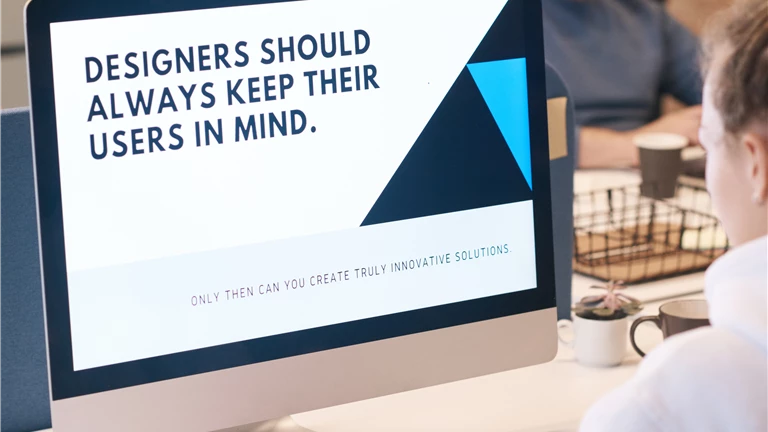Cognitive Biases
Ever wondered why certain elements on a website draw your attention? That's cognitive bias in action. Designers tap into these psychological tendencies to create visual hierarchies that guide users' eyes and actions. Anchoring, framing, and scarcity are just a few of the cognitive biases designers employ to shape user behavior and amplify engagement.
The Power of Defaults
Have you ever left a setting unchanged simply because it was preselected? That's the power of default options. UI/UX designers leverage this psychology to guide users towards desired actions. Whether it's opting into notifications or selecting a subscription plan, default options nudge users in directions that align with their goals.
Flow State and Immersive Experiences
Ever lost track of time while engaged in an activity? That's the flow state – a psychological phenomenon where users become fully immersed and absorbed. UI/UX designers aim to create this state by aligning the complexity of tasks with users' skill levels. By orchestrating seamless interactions, designers encourage users to lose themselves in the experience, resulting in heightened engagement and satisfaction.
Influence of Color and Emotional Resonance
Colors aren't just aesthetic choices; they're psychological triggers that evoke emotions and associations. UI/UX designers are color psychologists, selecting hues that communicate the desired mood or evoke specific feelings. From calming blues to energetic reds, color psychology shapes user perceptions and emotional responses.
Designing for Real-World Impact
UI/UX design isn't confined to screens; it extends into the real world. Consider smart home interfaces or self-checkout kiosks. Designers bridge the gap between the digital and physical, ensuring that interactions remain intuitive and seamless, even when they extend beyond the screen.
Now, let's take a look at some principles that can guide our design decisions:
- First Impressions Matter:
- Psychological Insight: Humans form rapid judgments based on visual stimuli.
- UI/UX Application: UI designers prioritize visually appealing layouts and aesthetics to create positive first impressions and capture users' attention.
- The Power of Familiarity:
- Psychological Insight: People tend to prefer what's familiar and are more comfortable with recognizable patterns.
- UI/UX Application: Consistency in design elements, such as navigation menus and button placements, helps users navigate effortlessly by relying on established conventions.
- Color Psychology:
- Psychological Insight: Colors evoke emotions and associations. For example, blue is often associated with trust and calmness.
- UI/UX Application: UI designers leverage color psychology to create user interfaces that evoke specific emotions or convey brand identity.
- Cognitive Load:
- Psychological Insight: Cognitive load refers to the mental effort required to process information.
- UI/UX Application: UX designers strive to minimize cognitive load by simplifying navigation, using clear labels, and presenting information logically, making the interface user-friendly.
- Hick's Law:
- Psychological Insight: Hick's Law suggests that the time it takes to make a decision increases with the number of options.
- UI/UX Application: UI designers optimize user decision-making by reducing clutter, providing clear choices, and minimizing distractions.
- Gestalt Principles:
- Psychological Insight: Gestalt principles describe how humans perceive and organize visual elements, such as proximity, similarity, and closure.
- UI/UX Application: UX designers use these principles to create intuitive layouts, group related content, and guide users' attention effectively.
- The Rule of Thirds:
- Psychological Insight: The rule of thirds divides a design into nine equal parts to create visually balanced compositions.
- UI/UX Application: UI designers use this principle to arrange elements and content in visually appealing ways, enhancing user engagement.
- Affordance and Signifiers:
- Psychological Insight: Affordance refers to an object's perceived use based on its visual cues.
- UI/UX Application: UX designers incorporate affordances and signifiers, like buttons and icons, to convey functionality clearly and encourage interaction.
- Fitts's Law:
- Psychological Insight: Fitts's Law states that the time to reach a target depends on its size and distance.
- UI/UX Application: UI designers consider Fitts's Law to optimize the placement and size of interactive elements for ease of use.
- Emotional Design:
- Psychological Insight: Emotions influence decision-making and user behavior.
- UI/UX Application: UI/UX designers create emotional connections through empathetic design, using microinteractions, animations, and human-centric elements.
- Progressive Disclosure:
- Psychological Insight: Users prefer gradual exposure to information over overwhelming interfaces.
- UI/UX Application: UX designers implement progressive disclosure by revealing information progressively, keeping users engaged and reducing cognitive overload.
- Zeigarnik Effect:
- Psychological Insight: Unfinished tasks tend to stay in our memory, creating a desire to complete them.
- UI/UX Application: UX designers use this principle to design interfaces that encourage users to take specific actions or complete tasks.




